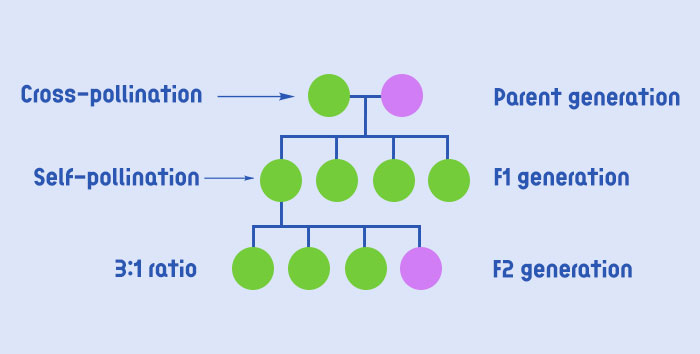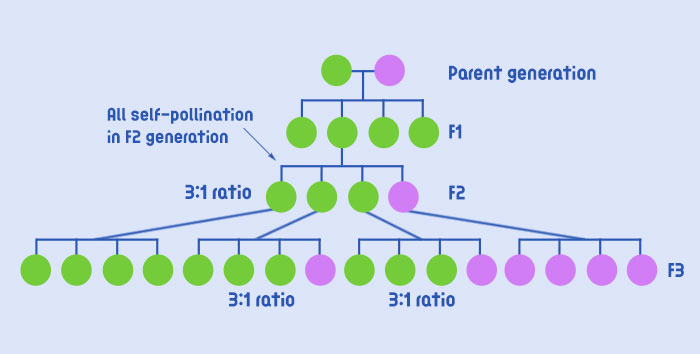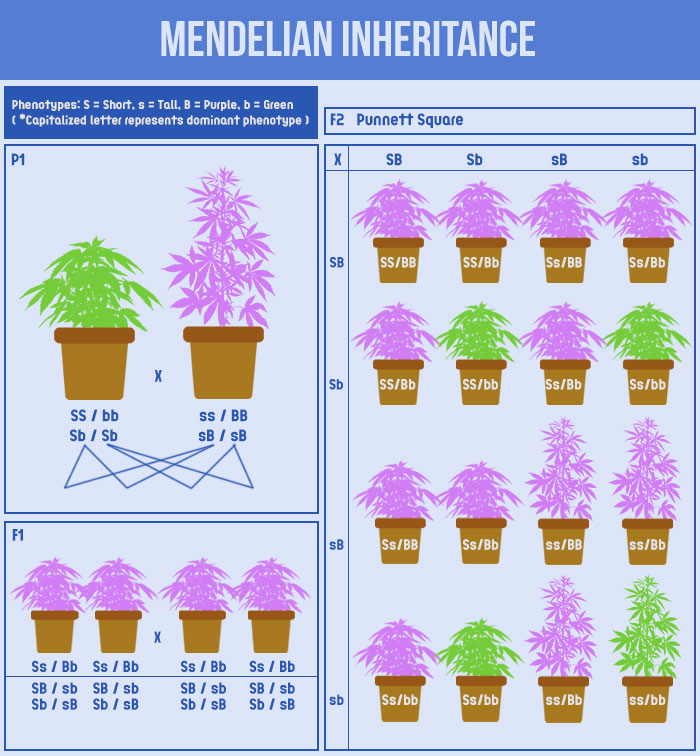Ever since I went to Spannabis and talked to some of the best breeders, growers, and seed bankers, I’ve been thinking about starting my own breeding program.
Yes, growing weed can sometimes be a nuisance, but it doesn’t have to be that way. It can also be one of the most rewarding hobbies that you’ll ever try, if you don’t give up when things go wrong.
Spannabis opened my eyes to the importance of good genetics and the advantages they bring, and you can best control the genetics of your weed if you breed your own.
So, if you’re having similar ideas, it may help you to learn what I discovered about the process of breeding marijuana seeds.
Choose the type of breeding program
Here’s another reason for starting your own breeding program.
Many of you here are familiar with the fact that weed has been getting increasingly stronger in the last 20 years, and that the potency doubled from 1998 to 2010.
The growers have been breeding a special kind of cannabis over the last 40 or 50 years – one that is very rich in THC while having little to no CBD.
Very potent cannabis is known to cause many issues for its users, one of the most common being cannabis-induced psychosis.
So, in order to bypass the trend of growing increasingly potent marijuana, and provide yourself with cheap, quality cannabis – you should start a breeding program, if it’s legal locally, of course.
First, you’ll have to decide what type of breeding program you want to run. By that, I mean that you’ll have to decide between two basic paths in breeding — stabilizing and crossing genetics.
Stabilizing genetics is the process of isolating desirable plant traits and removing unwanted ones, while crossing is the process of mixing two different phenotypes to create a new strain.
When crossing genetics in order to create a new phenotype, you’ll have to stabilize them in the end, so those two processes go somewhat hand in hand.
What is a phenotype?
A phenotype is, according to Google, “the set of observable characteristics of an individual resulting from the interaction of its genotype with the environment”.
In essence, every strain can be genetically very versatile, but some strains are much better in displaying their characteristics than others.
Some classic cannabis phenotypes are purple color in leaves and buds, short and bushy plant vs. lanky with branches, high THC content, high levels of CBD, certain smells, and basically just about anything you can pinpoint and breed towards.
Strains are also very often named after the phenotype they so clearly display. Some of the most famous examples of this are:
- Skunk, which got its name after the distinctive smell
- Purple Kush displays the purple phenotype
- Cat Piss, which is a phenotype of Super Silver Haze
- Chemdawg has a very distinctive smell, like the smell of diesel fuel
Another good example of one strain having several good phenotypes is Chem’s Sister which first appeared in 1996. Chem’s Sister is a Sativa-dominant version of the Chemdawg strain.
Phenotypes produced by particular genes of one plant don’t necessarily have to appear in the plant’s next generations. However, when trying to capture a certain phenotype, breeders will grow multiple plants from several generations in order to preserve the phenotype and improve upon it.
So, from one mother plant, you may get several next-generation plants that display both the phenotype you are looking for and several other ones.
Cloning plants
Cloning plants is another way of preserving genetics that you wish to breed and cross. In essence, cloning plants is the process of taking a part of the mother plant, planting it in the ground and letting it grow into a full-grown plant.
That new plant will have all the same characteristics of the mother plant as it is its clone. Cloning is often done in order to backcross a strain with itself in order to get better results.
Cloning is also a great way to get a huge number of plants from just one plant. It is done by topping the healthy parts of the plant, then planting them in rockwool or dirt. For more information about this process, you can either read our detailed guide on the vegetative stage or watch this video.
It’s always good to veg your plants a little longer and train them prior to topping them for the clones; if you top them once or twice before that, you’ll get more clones as every branch topped will turn into two new branches.
Crossing genetics
There are two ways you can get a new generation of plants that are the same exact strain. Just like with humans and animals, two plants – one male and one female – will reproduce with the male pollinating the female, which is how we get the next generation of seeds, known as F1 seeds.
The initial crossing of two unrelated parents is known as the filial-1 (F1) hybrid, and every subsequent generation is marked with the subsequent number.

The other way is by stressing a flowering female into turning hermaphrodite – by doing so the mother plant will grow a couple of male flowers in an attempt to pollinate itself.
By crossing a male and a female plant of different strains, you will get a completely new set of genetic traits, but by crossing two different phenotypes of one strain you can enhance and improve upon the existing genetics.
Mendelian inheritance with cannabis
Mendelian inheritance is a sort of law that occurs in nature, more precisely when combining different genetics in plants. Gregor Mendel was a little known Central European monk who experimented on green and yellow peas and found out genetic properties can be carried on among all plants.
Mendel noticed that every time a plant is allowed to self-pollinate, it gives birth to seeds with a very predictable set of targeted genetic traits. After crossing two plants, one with dominant and one with the recessive gene, the F1 plants will all carry both genes, but display only the dominant gene.
However, after letting the F1 plants self-pollinate, the resulting F2 generation will have 75% of the plants displaying the dominant gene, and 25% of the offspring will display the recessive gene, or a 3:1 ratio in seeds.

If we wish to have a set of plants that display their recessive genes, we simply have to let F2 plants self-pollinate, and this will yield a whole crop of plants with displayed recessive genes.
Plants can be crossed and selected to result in offspring displaying a wide set of different characteristics, which is why it’s important to keep a healthy number of plants in the gene pool at all times.
When trying to isolate and breed towards a specific set of genetic traits, tracking your plants is something that will help you pinpoint their dominant and recessive genes.
Let’s say your end goal is to create a hybrid of two strains, or perhaps you want to isolate a specific set of genetics and create a bunch of feminized seeds from there. You have your parent plants:
- A tall and purple plant, and
- A short and green plant
In this case, we have two dominant and two recessive genes we want to keep track off – their heights and colors. As we cross them the first time, we’ll know which of their genetic traits are dominant and which are recessive, according to Mendel’s observation (F1 always shows dominant traits).
As you can see from the image, in our case the dominant traits are the purple color and short stature. However, in the F2 generation the plants will show their genetic versatility, and we’ll also see the recessive genes appear.

If we wish to isolate and improve upon the genetic traits, we will have to do the following 3 things:
- Take clones of the mother plant
- Determine which F2 plants are displaying desired traits
- Cross those plants with the mother/father or their clones
Backcrossing is just a step away from stabilizing genetics and finalizing the breeding program with clones or feminized seeds.
Backcrossing and stabilizing genetics
As we mentioned earlier, there are two ways you can get a new generation of plants that are the same exact strain: by male and female plants reproducing, and by having the female plant turn hermaphrodite and pollinating itself.
This will create only a small number of seeds which will mostly be feminized.
This process often happens in nature when the plant doesn’t have its flowers pollinated, and it believes it’s about to die without giving offspring. Breeders often refer to this process as rhodelization.
Backcrossing is when you take a male offspring and pollinate its mother or its mother’s clone.
Backcrossing plants to previous generations will allow traits to become stabilized more easily and quickly, as you have a confirmed gene pool in previous generations.
Some genetic traits are harder to establish than others, so multiple attempts at backcrossing may be needed.
Backcrossing and inbreeding (pollinating brother and sister plants – from the same mother) carry the risk of genetic depression.
Genetic depression occurs after many generations of limiting and reducing the gene pool so that only desired traits appear in the offspring. That’s obviously not a good thing, if we want plants with a wide variety of different characteristics.




